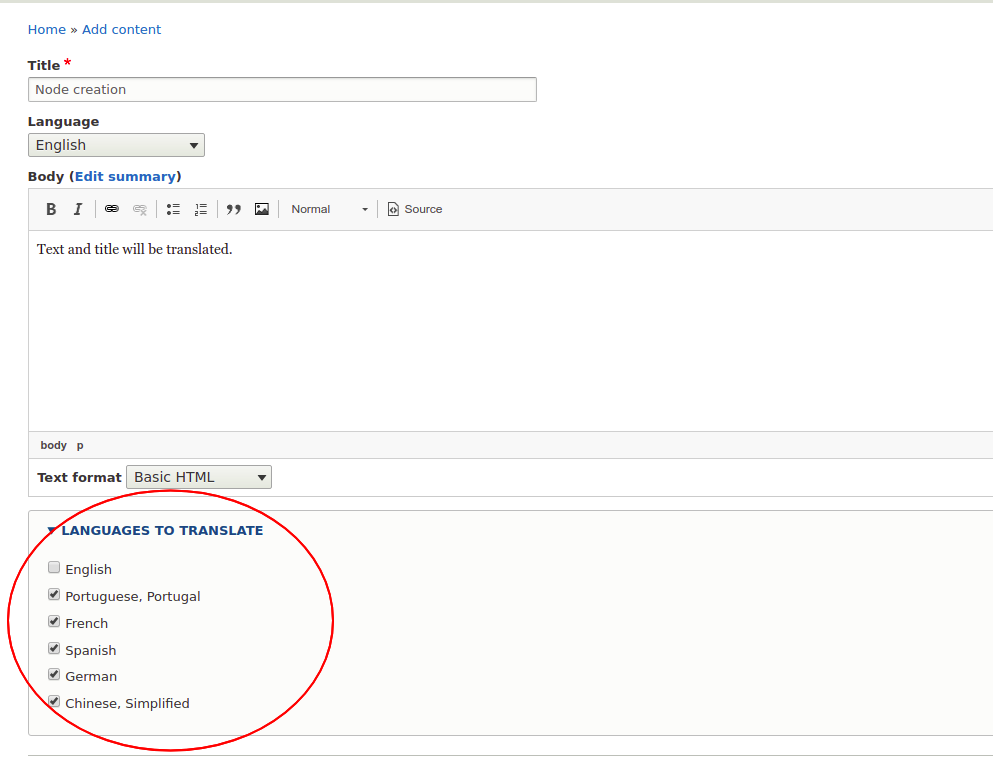
.png)
Session: Determine the language from a request/session parameter, like ?language=en or ?language=it.
Drupal translations translate tab not showing code#
Path prefix: language code as the first argument of the URL /en/contact or /it/contatti.ĭomain: language code as if you want like en. or it. URL: Determine the language from the URL (Path prefix or domain). Now, you will be presented with different options, as each of them is explained below: Click on the Detection and Selection tab. Select a language from the select list and click Add languageĪfter adding a language, it's now time for us to define which language will be used by Drupal to display page elements. Under Configuration -> Regional and language > Languages click on Add language Once it’s enabled, Language and Translate interface links will be added under Configuration > Regional and Language

Locale (core module): Adds language handling functionality and enables the translation of the user interface to languages other than English. Here is the process I went through to set up a basic multilingual site: While it provides some of the same results, it works very differently from the entity translation module. This module allows you to synchronize certain fields across languages when translating nodes with the Content Translation module.

Synchronize Translation is a submodule of the Internationalization module (i18n). It provides a way to translate taxonomy terms, users, and comments as well. The translation module lets you translate particular fields, while only a single node or entity is created.Įntity Translation works for all kinds of entities that have fields, not just nodes. Translated nodes are mapped together, but if they are distinct nodes they can be treated separately. One is Entity Translation (contrib) and the other one is Content Translation (core).Ī core Drupal module that allows you to translate nodes. In Drupal 7, we have two different types of translation methods, which we can call two main modules to implement the translation of content in order to make a site multilingual. Well, here I explain to you a few concepts that I’ve come across. When we go deeper into the concept of Drupal Translation, there is a lot more that can be learned. But in Drupal, we’ve been provided with a rich set of core and contrib modules, which supports translation for our website(s). The translation must be done with an awareness of a language's idioms as spoken within a geographic region. Also, building a multilingual website involves much more than translating content from one language to another. But doing a multilingual website with each having a different set of requirements makes the website handling tougher and tougher. As we all know, we were all getting projects and clients across the globe.


 0 kommentar(er)
0 kommentar(er)
